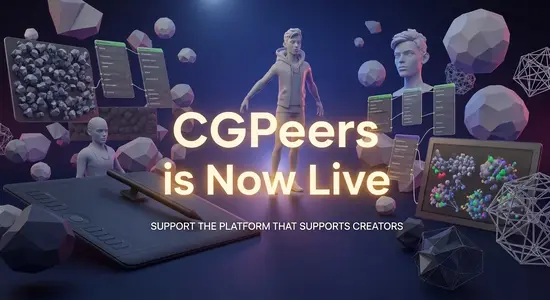This guide explores how to build custom textures using Substance Designer and apply them effectively in Unreal Engine 5 to construct immersive, optimized environments. Ideal for artists and developers looking to elevate their material pipeline for next-generation visuals.
Introduction to Procedural Texture Design
Procedural texture design has become a cornerstone of modern digital content creation, particularly in Unreal Engine 5 workflows. By leveraging advanced texturing pipelines, artists can generate scalable, high-quality materials without manual painting. This automation allows for more creative flexibility, enabling the rapid iteration of visuals tailored to specific needs in AAA games and real-time rendering scenarios. Whether you're working in virtual production or next-gen gaming, procedural methods streamline asset creation while maintaining visual fidelity. As demand rises for high-efficiency tools in global VFX and gaming studios, procedural workflows offer both performance and aesthetic advantage — a must-have for future-ready pipelines.
Building Textures in Substance Designer
Substance Designer remains the industry standard for creating procedural materials using a node-based PBR workflow. Artists start with substance graph nodes, constructing layered networks that define everything from roughness to emissive intensity. Through parametric detail control, these nodes are dynamically tweaked, offering complete control over surface variation, wear, and organic imperfections. For AAA-level visuals, features like height blending allow creators to blend material layers using height maps, improving realism and depth. The software’s flexibility makes it ideal for everything from photorealistic terrain to stylized assets. For more in-depth guidance, consult the official Substance 3D Designer Documentation.
Exporting and Importing into Unreal Engine 5
Once textures are finalized in Substance Designer, exporting maps for Unreal Engine 5 is seamless. You typically generate Base Color, Normal, Roughness, Metallic, and Height maps, ensuring compatibility with Unreal’s master material system. Using material instance setup, developers can reuse a single master while customizing material parameters for efficiency. Optimize your UV mapping for correct tiling and resolution scaling inside UE5. Thanks to native Lumen support, lighting dynamically responds to material changes in real time. These practices ensure optimized performance and visual quality in production. For step-by-step integration, visit the Unreal Engine 5 Documentation.
World Building and Application in UE5
In practical production environments, procedural materials are essential for large-scale asset deployment. Technical artists, environment designers, and real-time 3D specialists use these textures to create cohesive worlds with high visual standards. Features like dynamic material layering enable artists to apply terrain blends using runtime logic or layer masks. With vertex paint detailing, users paint texture variations directly into the scene, while Nanite performance control ensures scalability without compromising fidelity. These capabilities make UE5 an optimal platform for integrating complex material setups into high-end pipelines — from real-time film production to expansive, open-world game levels.
Professional Application and Global Industry Standards
This procedural approach is highly valued by environment artists, technical directors, and real-time visualization experts working in AAA game development, virtual architecture, simulation engineering, metaverse design, and cinematic production. The techniques and workflows detailed above are consistent with best practices across high-income markets including the United States, Canada, Germany, France, Japan, and South Korea. With the increasing convergence of real-time rendering and digital twins, procedural materials now play a central role in delivering scalable, efficient, and photoreal content across multiple sectors. This positions Substance Designer and Unreal Engine 5 as cornerstone tools in any high-tier digital production pipeline.
Support Original Creators: Visit Official Site
Legal Disclaimer: cgpeers.in is an independent educational platform providing informational content shared by its global user community. We DO NOT host, store, promote, or distribute any copyrighted material, illegal downloads, or pirated content. Responsibility for all uploaded content lies solely with the individual user who submitted it. By accessing this website, you agree that you are doing so at your own risk. CGPeers.in, its owners, administrators, hosting providers, and domain registrars assume no liability for any legal claims, damages, or actions arising from third-party user submissions or external links. cgpeers.in operates under strict compliance with international copyright laws, including the Digital Millennium Copyright Act DMCA. For any copyright concerns, please file an official complaint via our DMCA Policy. We respect original creators and encourage all users to support legal, official products and avoid unauthorized use of intellectual property. CGPeers.in is committed to compliance with Google AdSense policies by maintaining a high quality policy friendly environment focused on education, creativity, and industry knowledge.



 CGPeers is Live! Join the Community
CGPeers is Live! Join the Community 




